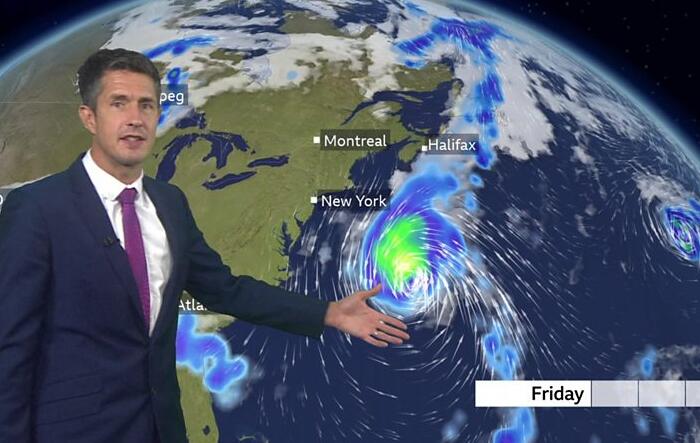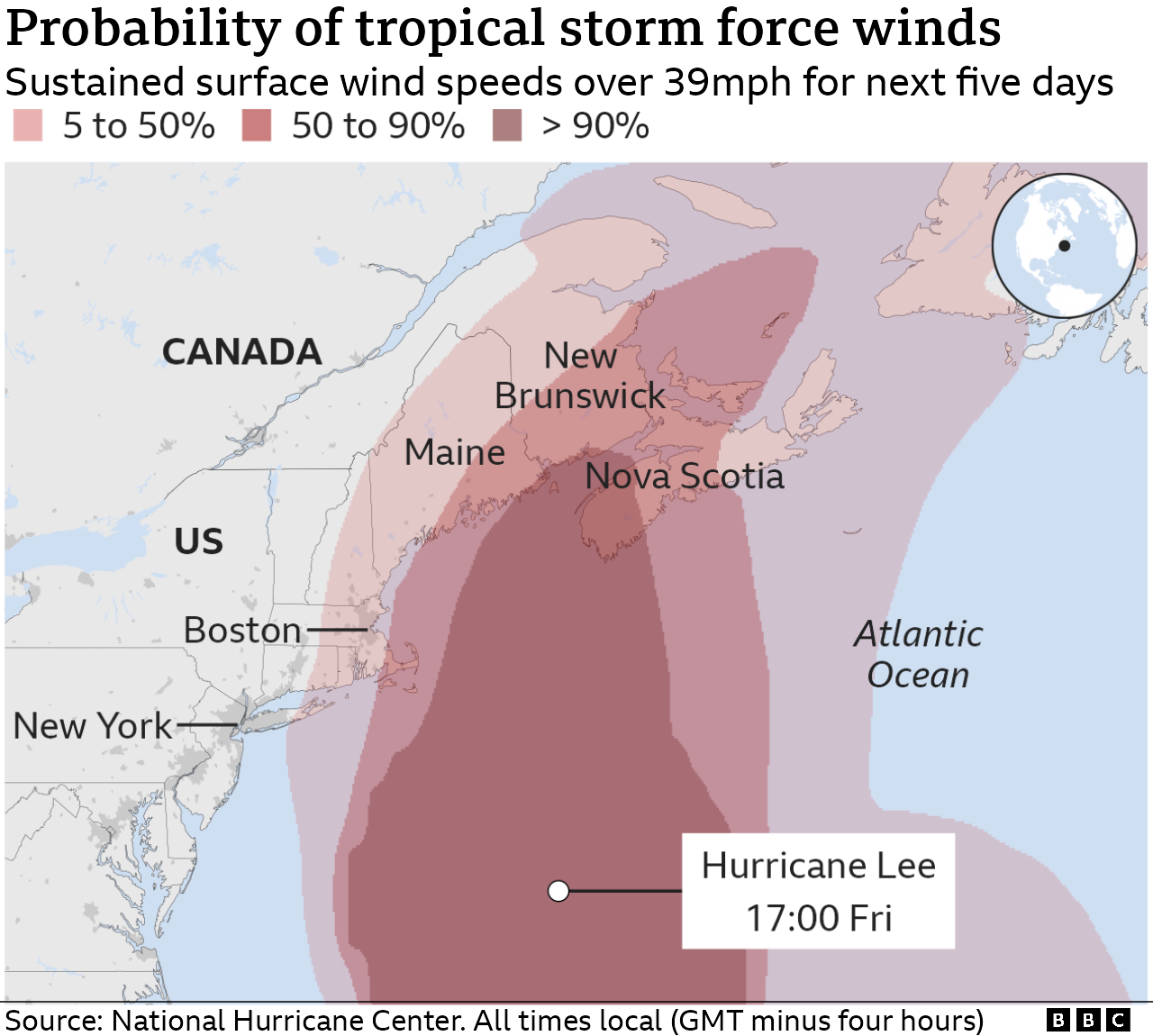
Storm Lee heads towards New England and Canada
Storm Lee has left 80,000 properties without power and is expected to make landfall around Nova Scotia at 15:00 local time (18:00 GMT) on Saturday.
The storm has become a post-tropical cyclone but is producing hurricane-force winds of 80 mph (130 km/h), the National Hurricane Center (NHC) said.
Flights and ferry crossings have been cancelled and millions in New England and Canada are under storm warnings.
Lee will bring strong winds, rain and coastal flooding, according to the NHC.
Because of the storm’s widening size, people will feel its impacts well beyond where the centre makes landfall.
“These conditions are likely to lead to downed trees and potential power outages,” the NHC said.
Lee is currently 220 miles south of Eastport Maine and 230 miles south of Halifax, Nova Scotia, and is moving at around 25 mph, NHC said.
Maine Governor Janet Mills declared a state of emergency and US President Joe Biden has ordered resources from the Federal Emergency Management Agency to be deployed, in anticipation of the storm.
Lee is expected to dump its heaviest rain over Maine. Parts of New Hampshire, Massachusetts and Rhode Island will also have intense rainfall.

The last hurricane to hit Maine was Hurricane Gerda in 1969. In 1991, Hurricane Bob was downgraded to a tropical storm just before making landfall.
The Canadian Hurricane Centre has also issued hurricane and tropical storm watches for parts of Nova Scotia, New Brunswick and Prince Edward Island.
Wildlife parks in Nova Scotia were closed on Friday as Lee crept towards the region.
“We are closing our parks for the storm and will reopen when it is safe,” said Tory Rushton, provincial minister of natural resources and renewables.
Nova Scotia Power said it had been preparing for potential power cuts because of the storm.
In Halifax, shelters have been set up for unhoused people so they can stay safe during the storm.
How much damage the storm will cause depends on its trajectory and any directional shifts before landfall. It is currently moving northward at a speed of 18mph.
Comments (0)